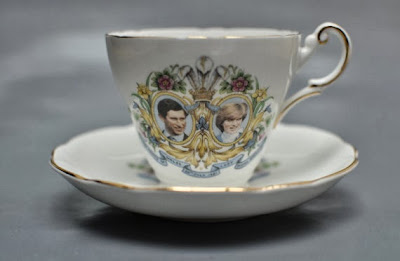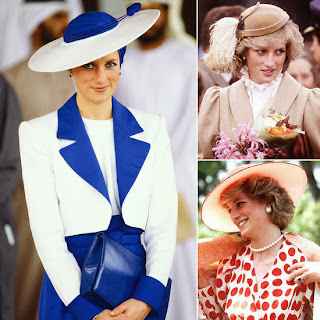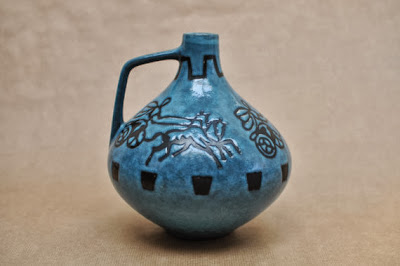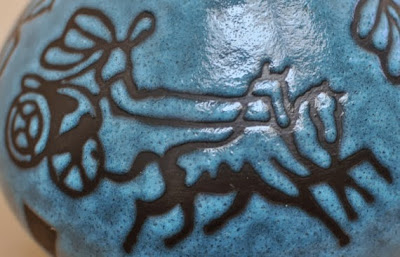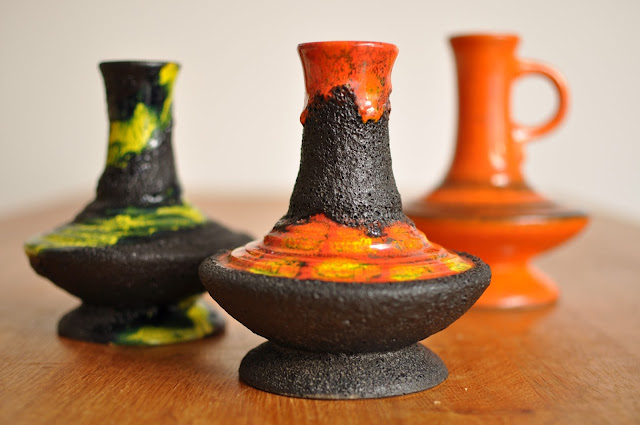I hope everyone had
a great Christmas! Mine was lovely, with good company, and obviously way too
much food! And gifts! As I already mentioned in my previous post, I was giving
some vintage gifts, and I also received a stunning vintage gift from my parents:
a Ruscha bull!
As I might have
mentioned before, most of the West-German pottery pieces that I sell on Etsy come from my own collection. As I live in a smallish apartment in the middle of
town, and my collection is rather large, there is no room to display everything
(in fact, most of my collection is kindly on show at my parents house), but I
still have a small part of my favorite
pieces on view in our own house.
My all-time
favorites are still the famous Roth vases, which I will show you another day,
but the ceramic bulls, made by Ruscha come at a very close second place.
Ruscha was founded
by Rudolph Schardt
in 1948, the name is a combination of the first few letters of his first and
last name. The factory has been existence from 1948 until 1996, when the name
and all the designs were bought by Scheurich. I'm not a 100% if they still do
this nowadays, but Scheurich produced the Ruscha designs in the late 1990s and 2000s
under the name Ruscha Art.
Two of the most
important names (and especially relevant to the bulls and this post) are Otto
Gerharz and Kurt Tschörner. Otto Gerharz was the production designer for Ruscha
from 1951 until he started Otto Keramik in 1964. He is the man responsible for
designing the famous and very desirable 'Vulcano' glaze. Most people see this
glaze as the first step towards the later Fat Lava glazes that make West-German
pottery so desirable today.
Kurt Tschörner was a
designer for Ruscha, who created many of the shapes, including the famous 313
model in 1954. In the 1960s Kurt Tschörner designed a line of animals for
Ruscha, including the magnificent bulls, that came in three different models.
The model that I have in my collection also came in two different sizes, mine
being the larger version.
The catalog, that
has been generously made available by Forrest Poston on http://www.ginforsodditiques.com/rus.cat.cover.html
shows that a large bull originally cost 45 Deutsche Mark, which was a lot of
money back in the days. In comparison, the most expensive décor on a 313 vase
was 10,90 DM. In 1966 the average yearly income in Germany was just under
10.000 DM, so spending 45 DM on a ceramic bull, must have been a luxury. Hence,
these were probably not sold in large numbers, making them rare nowadays.
So can you imagine how happy I was when I unpacked this gorgeous bull? It has the most beautiful blue and purple shades on a gray background. It's absolutely the prettiest one in my collection. It'll sit very pretty next to my Vulcano glazed bull, that I bought at an auction house a few years ago.
One note of warning when you are thinking about collecting these: I think Ruscha have made these bulls from the 1960s up until they closed in 1996. As they aren't marked, it is (as far as I know) impossible to know if your bull was made in 1969 or 1996. Obviously certain glazes were only used during a certain period (I think the 'vulcano' glaze was only used in the 1960s for example, but I would have to do some more research to verify this), making it possible to date a piece. In addition to that, I have seen some bulls online with the Ruscha Art sticker, meaning they must be post 1996, and made by Scheurich with the original molds (the only other explanation is that Scheurich bought old Ruscha stock and marked them with their label, but I have no confirmation on this, that is just a guess on my side).
Last but not least, I would like to wish you all the best for 2014! I hope it'll be an awesome year, with lots of exciting finds.



.JPG)


